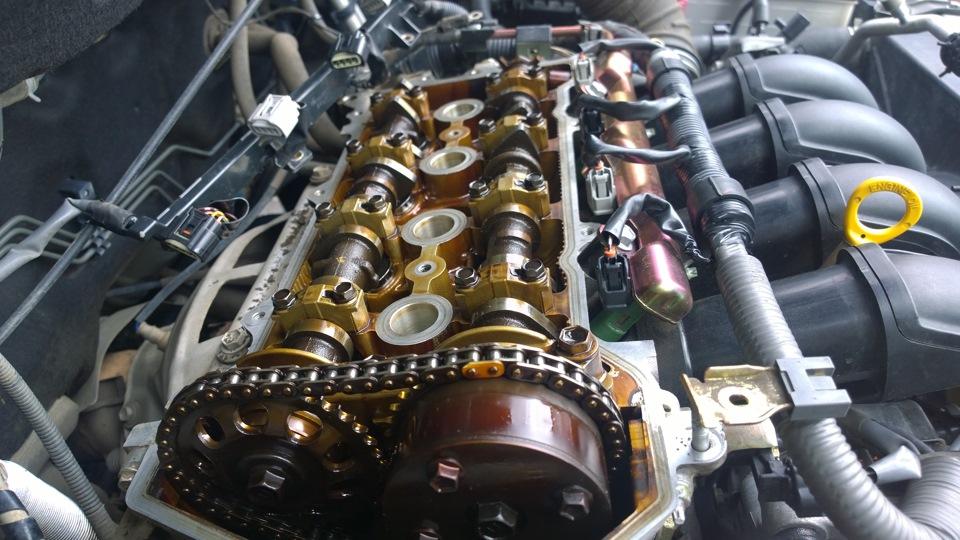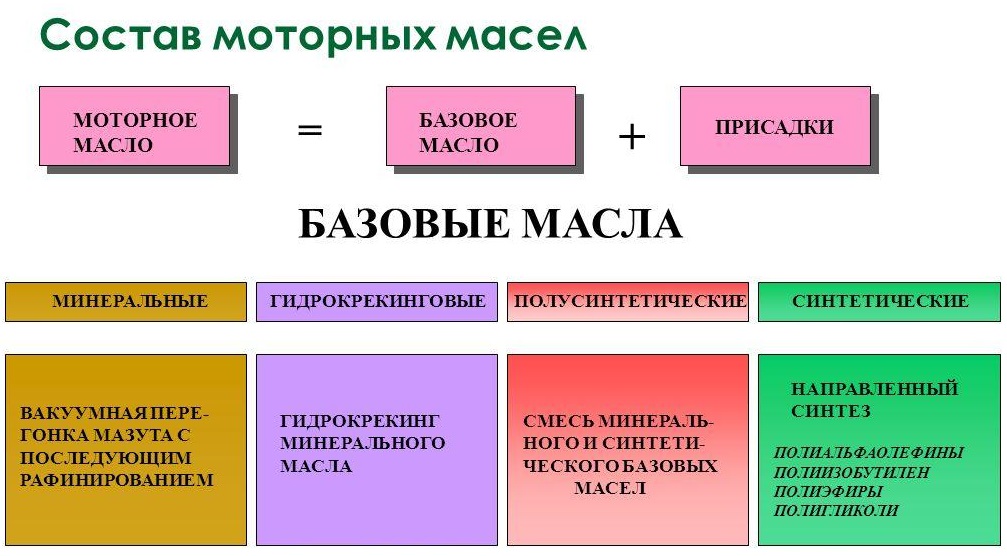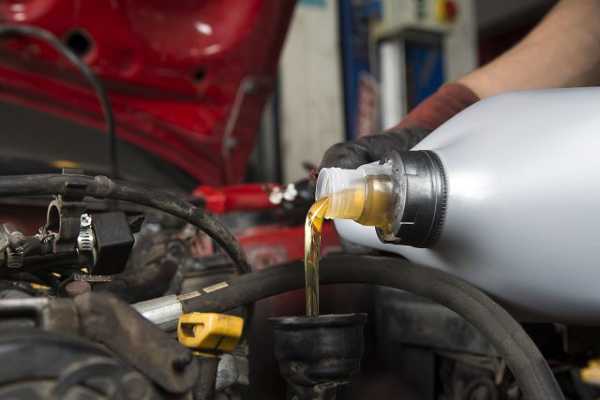What is the difference between the synthetic oil from the semi-synthetic and what is better?
The widest range of automotive lubricants coming on sale is divided into 3 groups: mineral, synthetic and semi-synthetic origin. When buying "consumables" for servicing the car, motorists often think about the question, which oil is better for the engine - "Synthetic" or "semi-synthetic". Both products are good, but the difference in price is essential. The problem should be considered from different sides.
What is "synthetics"?
It appears from the name that this type of lubricant has a completely artificial origin. The liquid is synthesized from oil or natural gas using complex and expensive processing technology. The goal is to get the most perfect lubricant intended for automotive engines and transmissions.
The properties of "synthetics" are really unique:
- An important characteristic of oil is viscosity - it changes little with an increase or decrease in ambient temperature. That is, in winter, such a lubricant does not thicken, and in the summer - it does not catch up to the consistency of water.
- It follows from the previous paragraph that the material contributes to the extension of the service life of the driving parts of the power unit. It creates a steady oil film on the surfaces, regardless of the street temperature.
- The almost unchanged density of "synthetics" in different periods of the year provides reliable launch of the engine "on the cold".
- Artificial lubricant, supplemented with a package of anti-seized and other additives, is able to work without loss of properties of 15-20 thousand km of mileage.
- The significant difference between "synthetics" from other oils is a small consumption for a voligator. If the material is used in a strongly worn out engine, then leaves the minimum nagar layer in the chambers.
 Liquid synthetic lubricants intended for transmission are not exposed to too high temperatures, so they serve as longer than motor-50-80 thousand km. Saving viscosity at a certain level in different operating conditions, the oil actively protects expensive details of the transfer mechanisms.
Liquid synthetic lubricants intended for transmission are not exposed to too high temperatures, so they serve as longer than motor-50-80 thousand km. Saving viscosity at a certain level in different operating conditions, the oil actively protects expensive details of the transfer mechanisms.
Semi-synthetic oils
Motor and transmission "semi-synthetic" is a compromise between oils on a synthetic and mineral base (the last speech will go below). The creation of such lubricants is dictated by the need to reduce the expensive "synthetics", while maintaining its operational characteristics.
As a result, manufacturers began to supply lubricant with mineral and artificial oil to the fuel market, consisting of mineral and artificial oil in a ratio of 50/50 or 40/60. Mixing is made according to a special technology that does not allow the worsening lubricating and oxidative characteristics.
In practice, the difference between "semi-synthetic" and pure "synthetics" is expressed as follows:
- The viscosity of the material is changing when heated and cooling. If the temperature drops below the minus 10 ° C, the oil is noticeably thick.
- The duration of operation without deterioration of lubricants and the contamination properties is less - up to 15 thousand km.
- The cost of the product is below 1.5-2 times.
- The degree of protection of rubbing surfaces is higher than that of mineral water, but lower than when using synthetic lubrication.
Sellers GSM often impose the viewers that manufacturers are laying in the "synthetic" a more advanced package of additives than in semi-synthetic compositions. In fact, a set of chemical additives depends on the particular plant - the manufacturer, whose developers are trying to improve all groups of oils. The amount of substances entered in the "semi-synthetic" may be quite large.

Briefly about "mineral milk"
If the synthetic oil from the semi-synthetic differs in operational qualities and price, then the advantage of mineral lubricants is accessibility. For the rest of the parameters, the material is significantly inferior to other varieties of oils, since it is made of oil directly using cracking technology. To improve product properties, manufacturers also add a variety of additives.
The resistance of the mineral lubricant is limited to the mileage of 8-10 thousand km, then the protective properties deteriorate sharply. The oils obtained by the traditional method are thick and diluted in accordance with the change in the ambient temperature or the heating of the working components and the aggregates. Washing qualities are also mediocre, why motors on "mineral milk" from the inside are covered by Nagar.
The difference in the operation of mineral and synthetic compositions intended for the transmission is quite large. Example: The maximum interval between the replacements of the TAD-17 liquid lubrication is only 30 thousand km.
What lubricant is better to choose?
In this context, motorists are most interested in 2 specific questions: what engine oil is better to mix materials made on a different basis. The correct answer to the first question sounds like this: in the motor and transmission aggregates of the car, it is necessary to fill the liquid lubricant, recommended by the manufacturer in the instruction manual. What basis is the oil, the values \u200b\u200bdo not have. The viscosity class on the SAE scale or another metric is important.
Note. At the factory, the aggregates of medium and business class machines is composed, as a rule, "semi-synthetic". More expensive synthetic lubricants are used for premium-segment cars.
Another thing is how different materials behave in the process of exploitation on engines of different degrees of wear. You are not mistaken with the choice, if you listen to the following recommendations:
- "Synthetic" can be used on any motors - new and "poured". Question in feasibility: in the power unit that recently descended from the plant conveyor, it makes no sense to pour an expensive synthetic oil. To the second maintenance quietly use "semi-synthetic".
- Do not allow yourself delays with a replacement of any lubricant - motor or transmission. The best oil gradually loses friction qualities - as a result of a large car run or from time impact.
- For engines with a mileage of 30-200 thousand km, lubricant is recommended on a synthetic basis, provided that the flow rate does not exceed 100 grams per thousand kilometers.
- In worn motors, "devouring" oil, pour "synthetics" meaningless. Use mineral or semi-synthetic lubricant, but change it more often.
 A separate question is the possibility of mixing semi-synthetic oils and synthetic. From the point of view of the theory, the compositions are fully compatible, because both contain an artificial component. Practice shows contradictory results - in many cases, the topping and mixing of various materials creates problems with pressure in the channels of the power unit.
A separate question is the possibility of mixing semi-synthetic oils and synthetic. From the point of view of the theory, the compositions are fully compatible, because both contain an artificial component. Practice shows contradictory results - in many cases, the topping and mixing of various materials creates problems with pressure in the channels of the power unit.
To avoid such troubles, it is better not to risk and not add semi-synthetic lubricant to the "synthetics" (and vice versa). Even if you buy alone manufacturer's products, there is no warranty that after mixing it does not happen. Consider that there is a huge number of fakes. Therefore, always try to apply lubricating formulations on the same basis, mixing always carries the risk.
An important rule! In extreme cases, it is allowed to mix "semi-synthetic" with mineral water or "synthetics" (separately, and not 3 species together). Adding a synthetic product to mineral oil is strictly prohibited.
If you need to get away from "semi-synthetic" to another type of lubricant, perform a replacement with flushing. For this purpose, use a special flushing composition, and not a liquid - a "five-minute" added to the old oil. Masters - Auto mechanics advise to make flushing even when the lubricant of another manufacturer is purchased. The filter changes with oil with any scenario, regardless of the run.














